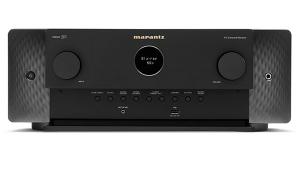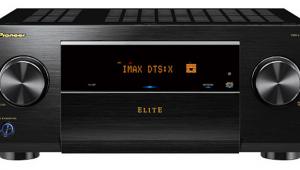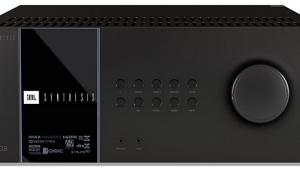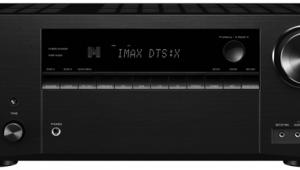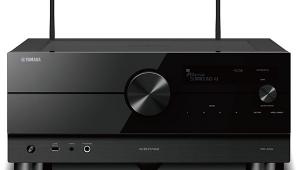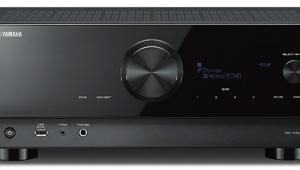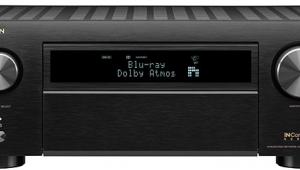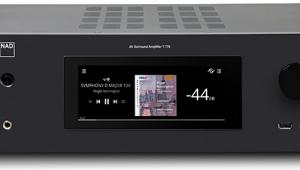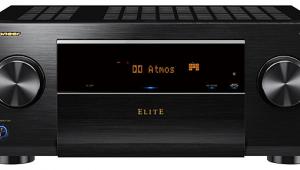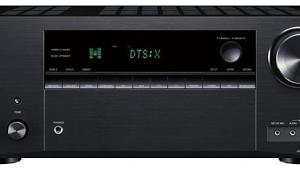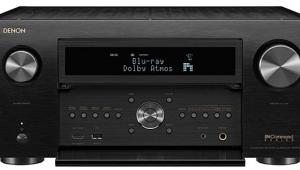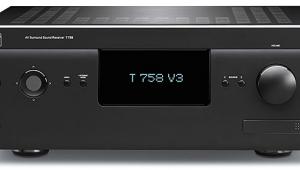Arcam AVR360 A/V Receiver
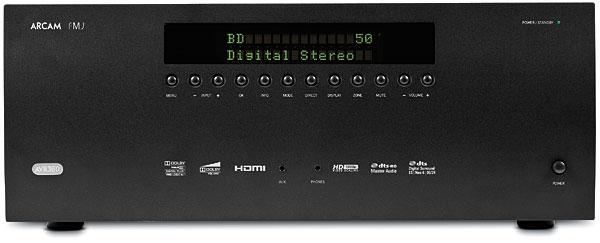
The Good Ship Arcam steers a different course than most manufacturers of audio/video receivers. That means the prospective buyer has to read spec sheets in a different way. At 75 watts per channel, this $1,799 receiver shares a power spec with much, much cheaper competitors. But that doesn’t mean it performs the same. For one thing, Arcam specifies power output with five channels driven (1 kilohertz )—a hurdle most manufacturers don’t even try to clear. The figure rises to 80 watts (20 hertz-20 kHz) or 90 watts (1 kHz) with two channels driven. This leads to what might be called the Arcam Paradox: If you’re willing to step down in the specified number of watts per channel, you can optimize a product, especially its power supply, so that it will drive five reasonably efficient speakers to high levels without hardening the top end or collapsing the soundfield.
In the context of the Arcam receiver line, the AVR360 is the new entry-level model. It joins the AVR400, 90 watts per channel, $2,499; and the world-class AVR600, 120 watts per channel, $4,995. Viewed strictly in terms of dollars and watts, the discontinuation of the AVR500 (100 wpc, $3,599) leaves a gap between the number one and number two models. That gap opens to a chasm when you consider that the top-line AVR600 is the only one that uses rail switching to kick the amp into high gear when it’s driving power-hungry speakers at levels suitable for a rock concert or car chase.
Clearly, Arcam wants the high-end consumer to experience its receivers at the top of their game. At the same time, the company is looking to make new friends among those who can get along without that extra power—in other words, those whose speakers are of average to high sensitivity. Driving my Paradigm Reference Studio 20 v4—with measured sensitivity of 88 dB—the AVR360 had much of its bigger sibling’s winning personality, including a midrange that should be love at first hearing for those of you who care about music. In terms of voicing and resolution, Arcam’s least expensive model sounds better than the top-line models of many competitors. Audiophile values do make a difference.
Subtle Look, Essential Features
The AVR360 has a subtle but distinctive look. Its convex front panel has a row of buttons beneath an attractive green display. What’s odd about it is not what’s there, but what’s missing: the volume knob. Arcam had three rationales for eliminating it: The knob made the unit too deep for shelf installation, it added a needless cost that detracted from the product’s hi-fi-intensive mission, and most users depend on the remote anyway. I actually use the front-panel controls of various products pretty often, but then, I’ve always prided myself on being unusual. Anyway, two buttons at the far right, same size as the others, handle volume.

While this product is far from feature driven, it does have most of what today’s home theater buff would consider essential in a receiver. That includes decoding for the lossless surround formats you might find on a Blu-ray disc (DTS-HD Master Audio and Dolby TrueHD) as well as the old-school formats you’d find on a DVD (Dolby Digital and DTS). HDMI comes in version 1.4 with 3D capability, if you’re so inclined; ARC (audio return channel), which eliminates an extra audio cable by allowing a TV to send audio upstream to the receiver; and CEC (consumer electronics control), which allows components to share commands. Knowing that consumers increasingly depend on HDMI for high-res and high-performance audio, Arcam has added “professional-grade jitter reduction.” There was a time when receivers from audiophile companies were less than perfectly HDMI savvy. That time is over—at least for Arcam.
Connectivity is pretty complete. In addition to high-def-worthy HDMI (five in, one out) and component video (three in, one out), the video connections include composite video and the increasingly rare S-video for legacy analog sources. Upscaling and cross-conversion to 1080p to HDMI is provided via all video inputs, although the component video input is limited to standard definition 480p. While there’s no phono input, there is a back-panel USB input that’s compatible with MP3, FLAC, AAC, and AAC Plus digital files. You can also use the Ethernet connection to stream Internet radio via vTuner or access media from a router-connected computer. For your Apple iDevice, Arcam has offered various docking solutions over the years. The latest is the drDock ($299), a cast-aluminum beauty large enough to accommodate an iPad. It offers full digital connectivity for audio and video, including an HDMI output.
Arcam provides for autosetup of parameters such as speaker size, distance, level, and crossover to the subwoofer. While the receiver also performs room correction, the equalization is not automatically applied to all inputs—you have to enable it for each one. In this respect, Arcam is not just being absentminded. The company is taking a stand: The manual urges you to solve acoustic problems with speaker positioning or wall treatments. Again, audiophile values rule the roost.
Fortunately, Arcam doesn’t carry purism to an extreme. This receiver includes Dolby Volume, which compensates for varying levels among source inputs and facilitates low-volume listening by ensuring that dialogue and background noises don’t fall below the threshold of perception. Every receiver should have either Dolby Volume or a competitor straddling the same territory (Audyssey Dynamic EQ/Volume or THX Loudness Plus).

